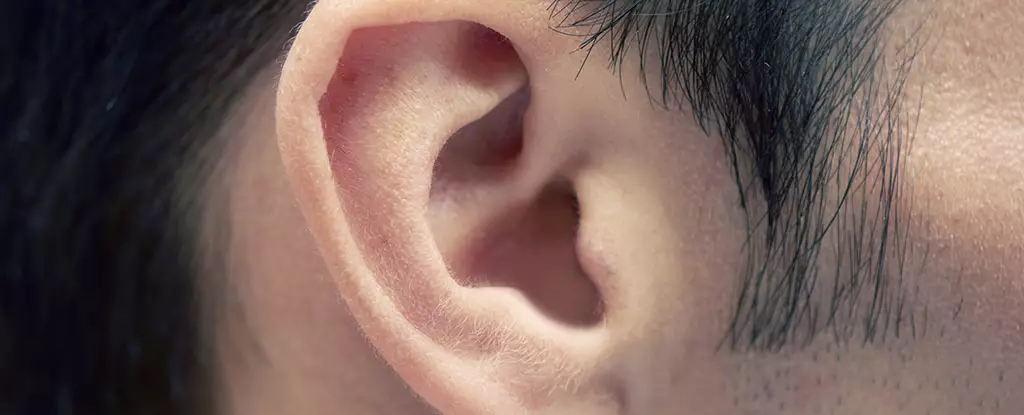Parkinson’s disease remains one of the most insidious neurodegenerative disorders, quietly robbing individuals of their motor control and quality of life over time. Conventional diagnosis often occurs after significant symptoms emerge, by which point irreversible brain damage has already taken hold. This timeline is unacceptable given the potential for more effective interventions if detected earlier. The pursuit of non-invasive, accurate, and timely diagnostics is not just a scientific ambition—it is a moral imperative for patients and their families. The recent surge of interest in biochemical markers beyond traditional clinical assessments signals a promising new chapter in Parkinson’s research.
Why Earwax? An Unexpected but Logical Biomarker
It might sound odd at first, but earwax is emerging as a surprisingly rich source of information about neurological health. Previous research focused on changes in sebum—the oily layer on our skin—that appears to alter subtly in Parkinson’s patients. However, the unreliable variability introduced by environmental exposure diluted the diagnostic potential of sebum analysis. Enter earwax (cerumen), a naturally protected secretion, shielded from outside factors, making it a more stable repository for chemical signals linked to disease.
This shift in biomarker focus is a clever exploitation of the body’s own protective mechanisms. Unlike blood or cerebrospinal fluid draws, collecting earwax is minimally invasive, simple, and potentially scalable for routine screening—qualities essential for future clinical adoption.
Volatile Organic Compounds: Chemical Clues in Cerumen
Central to this diagnostic innovation is the identification of volatile organic compounds (VOCs) within earwax that may be distinctly altered in Parkinson’s patients. VOCs—often dismissed as mere background chemical noise—are here elevated as chemical fingerprints reflecting pathophysiological processes occurring deep within the brain.
In a study examining over 200 individuals—nearly half diagnosed with Parkinson’s—four VOCs stood out: ethylbenzene, 4-ethyltoluene, pentanal, and 2-pentadecyl-1,3-dioxolane. These compounds, linked to inflammation and cellular stress, hint at molecular disturbances caused by neurodegeneration. Although preliminary, these findings represent a leap toward transforming subjective symptom assessment into objective biochemical testing.
Artificial Intelligence Steps In: Unlocking Diagnostic Potential
The integration of artificial intelligence (AI) to analyze VOCs from earwax introduces a compelling technological synergy that could change the face of neurodegenerative diagnostics. By training an AI model on VOC patterns, researchers reported a remarkable 94.4% accuracy in classifying Parkinson’s presence within their study group. This suggests that machine learning algorithms can discern subtle, complex chemical signatures beyond human detection.
However, enthusiasm must be tempered with realism. The sample size remains small, and without validation in diverse populations and clinical stages, the robustness of the AI model remains unproven. Nevertheless, this approach exemplifies the promising intersection of biotechnology and data science, heralding more accessible and precise medical diagnostics.
Challenges and the Road Ahead
Despite its promise, this earwax-based diagnostic strategy faces several hurdles before replacing or even complementing existing methods. Parkinson’s diagnosis today often involves clinical evaluations nuanced by symptom variability, alongside expensive brain imaging. A cheap, quick earwax test could democratize early detection, but only if it consistently performs well across different ethnic backgrounds, disease stages, and larger cohorts.
Moreover, scientific caution is prudent. Parkinson’s pathology is complex, and correlating peripheral VOC changes directly with cerebral events is an inferential leap. Inflammation and oxidative stress might cause systemic biochemical shifts, yet whether these VOC signatures are unique to Parkinson’s or overlap with other conditions requires thorough investigation.
From a policy perspective, embracing such innovations demands sustained funding, interdisciplinary collaboration, and ethical oversight—particularly when AI-driven diagnoses increasingly influence patient care decisions.
The Broader Implications for Neurodegenerative Disease Research
Beyond Parkinson’s, the strategy of seeking hidden clues in unconventional biological materials opens exciting windows into neurodegenerative disease mechanisms. Earwax VOC analysis might one day illuminate early molecular disturbances not only in Parkinson’s but also in Alzheimer’s and other disorders, guiding preventive strategies and novel therapeutics.
This paradigm shift also challenges researchers and clinicians to rethink diagnostic frameworks, moving away from symptomatic snapshots to dynamic biomarker profiles. The hope is that such models will catalyze earlier interventions, personalizing treatment plans and improving patient outcomes.
While the journey from earwax discovery to clinical reality is long and fraught, the innovation showcased here embodies the spirit of 21st-century medicine—bold, imaginative, and driven by a deep commitment to alleviating human suffering.


Leave a Reply